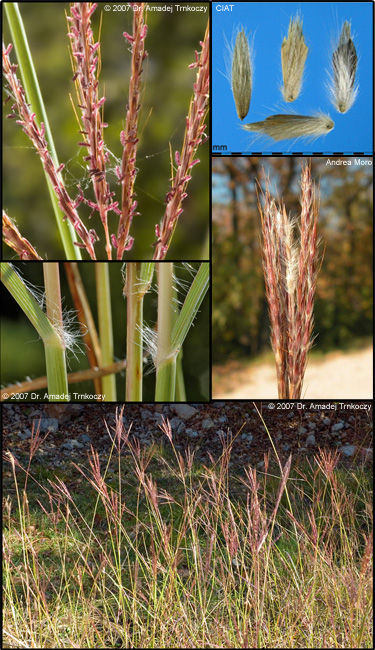Yellow bluestem (Bothriochloa ischaemum)
 Description: Introduced to the United States in the 1920s and 30s for erosion control.
Description: Introduced to the United States in the 1920s and 30s for erosion control.Habit: Perennial grass that can reach heights of 3-5 feet tall.
Leaves: Basal, glaucous, flat, and 1-10 inches long with scattered hairs.
Stems: Slender, solid and green turning yellow when mature with brown to purple nodes.
Flowers: Terminal, panicle is purplish in color and has 2-10 racemes that are 1-3.5 inches long. Spikelets in pairs with one sessile and perfect (0.12-0.18 inches long and ovate) while the other is pedicellata and sterile.
Fruit and seeds: Seeds are brown in color.
Habitat: Native to Europe and Asia. Found in pastures, grassy areas along roads, open areas along streams and other disturbed areas.
Reproduction: By seed.
Similar species: Grasses in the Bothriochloa genus.
Monitoring and rapid response: Extremely difficult to control. Timely mowing, controlled-burning and herbicide application can suppress growth. Credits: The information provided in this factsheet was gathered from the Texas Invasive Species Institute and the Invasive Plant Atlas of the United States.
Individual species images that appear with a number in a black box are courtesy of the Bugwood.org network (http://www.invasive.org). Individual photo author credits may not be included due to the small display size of the images and subsequent difficulty of reading the provided text. All other images appear courtesy of Google (http://images.google.com).
